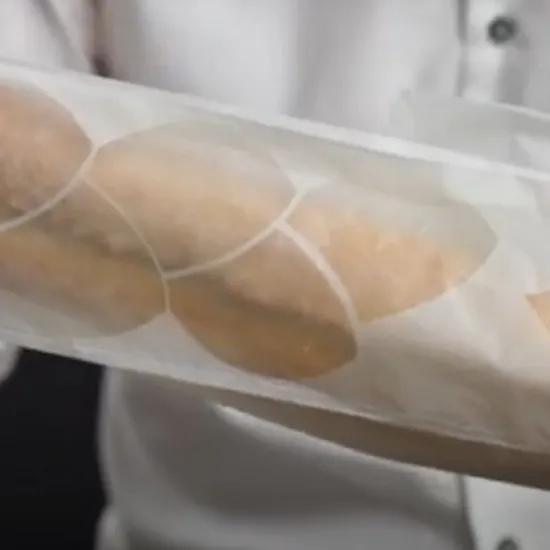Insights from the World Biopolymers and Bioplastics Innovation Forum
Sirris expert Pieter Samyn had the honor of chairing Leadvent Group’s 2nd Annual World Biopolymers and Bioplastics Innovation Forum in Amsterdam on February 28-29, 2024. The conference spotlighted recent advancements and successful case studies on the implementation of biopolymers and bioplastics, and discussed frameworks for the design and use of bio-based materials in different applications. Below, you will find a summary of the conference’s key findings.
Modern society relies on plastics for a wide range of everyday purposes. However, the surge in demand and production has caused a significant accumulation of plastic waste. Concerns about traditional fossil fuel polymers – depletion of resources, volatile prices, and greenhouse gas emissions – have prompted a search for alternative, renewable energy sources and materials with a lower carbon footprint.
Bioplastics offer a promising solution. They are either bio-based or derived from renewable resources that are potentially degradable or compatible with recycling systems. Therefore, they are considered environmentally and economically viable substitutes for conventional petrochemical plastics.
|
From research to real-world applications
Advancements in bio-based materials have evolved from academic research to promising real-world applications. Currently, bio-based plastics are most commonly derived from carbohydrate-rich plants (such as corn or sugarcane) or oil plants. Those traditional agricultural crops, also called first-generation feedstock, offer the most efficient way to produce bio-based plastics. Meanwhile, second-generation feedstocks, such as residual food products and lignocellulose residuals, are emerging as viable alternatives.
Technological breakthroughs have played a pivotal role in those developments, driving down production costs for bio-based materials, while improving their performance and making them comparable – or even superior – to their fossil-based counterparts. That transition has also been facilitated by several other factors, including access to affordable feedstock plus strategic partnerships. All of those elements contributed to the increased availability and capacity of bio-based materials, paving the way for their integration into diverse industries.
In recent years, for example, bioplastics have found primary applications in the packaging industry, consumer goods, textiles, agriculture, horticulture, and the automotive sector. They are now increasingly being implemented in electronics, coatings, adhesives, and construction.
And what about polymers? The toolbox of industrially available bio-based building blocks for monomers and polymers continues to expand. That encompasses not only drop-in solutions, but also natural polymers with new functionalities. Specific applications of biopolymers in a variety of sectors – from packaging and marine environments to homecare, coatings, and adhesives – demonstrate their versatility and potential for future growth.
New valorization chains
Many companies are trying to get ahead of the ever-evolving sustainability regulations, proactively integrating bio-based materials into their supply chains. However, this shift requires new valorization chains that enable access to renewable feedstock within a circular economy. That includes biomass suppliers, chemical converters, processing industries, and end users. Such access to alternative feedstock will facilitate the creation of sustainable products.
Efforts are underway to establish those chains, complemented by recognized certification schemes to ensure quality and sustainability. However, several considerations must be taken into account.
- Clarity: Precise definitions and correct terminology are essential in the field of biopolymers and bioplastics to ensure clarity and avoid confusion. Clear communication regarding labeling and bio-based claims should help the public and end users to make informed decisions about the products they choose.
- Balanced sourcing: Organizations should balance their sustainable sourcing efforts between bio-based and recycled materials, wherever feasible, to minimize environmental impact.
- Sustainable design: Developing future-proof plastics for a circular economy requires considering re-use or remanufacturing, ultimately leading to different end-of-life options focused on biodegradation and/or recyclability (depending on the application).
Maximizing biomass potential
It is important to note that, of the global agricultural land area, only a fraction of arable land (0.015%) is used to grow feedstocks for bioplastics. Therefore, bioplastics production from agricultural crops is not expected to interfere with land use for bioplastics or agricultural purposes. In that context, special attention should be paid to the potential of waste and residual biomass streams.
Exploring collaborations with other sectors is crucial to leverage potential biomass and residual by-products for the production of chemical feedstocks and valuable materials. A biomass gap is expected if we want to keep meeting our needs, and parallel advancements in biotechnology will be necessary to bridge it.
|




